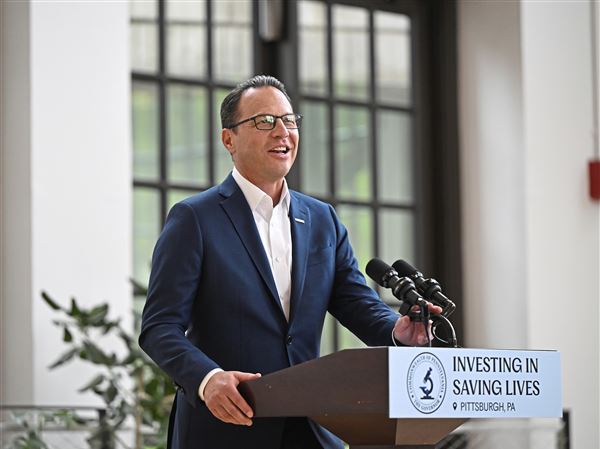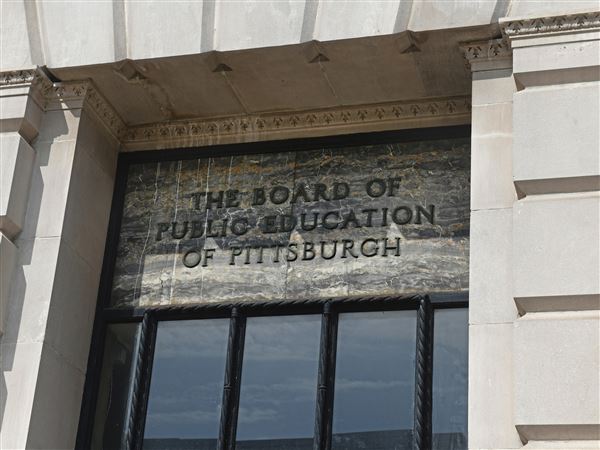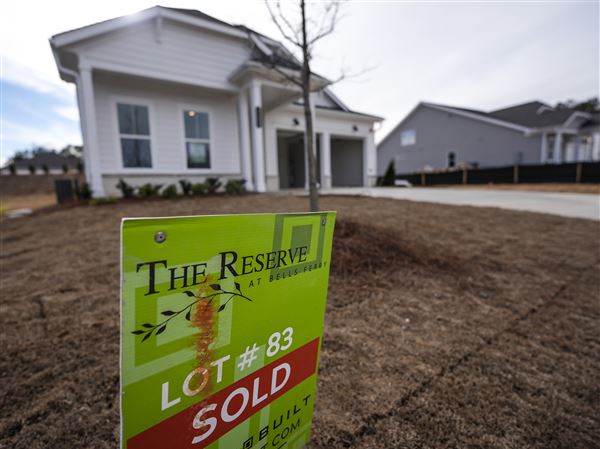Eighty years ago, more than 400 Ku Klux Klansmen rode evening trains into the tiny Cambria County town of Lilly, made their white-robed march through town -- darkened after its electric lines were cut -- and burned two crosses in a nearby field.

John Beale, Post-Gazette
When they returned to the depot, they were confronted by townspeople wielding a fire hose. Someone started shooting, and by 10 p.m. three Lilly residents were dead and 20 people were injured.
It was a time when a quarter million people in Pennsylvania were members of the Klan, when all but two of the state's counties had KKK chapters and when its agenda was strongly anti-Catholic. Lilly, a coal-mining village of about 2,300, was targeted because it was predominantly Catholic and a stronghold of United Mine Workers -- and because it had defied the Klan on previous occasions.
"They came prepared for trouble. That was the reason that they came in here," said Art Yingling, one of the men injured in the April 5, 1924, melee, in an interview before he died two years ago. "This was the only place around here that tore down their crosses. When they put up their crosses, they tore them down."
The interviewer was Hugh Conrad, nephew of one of the men killed. Conrad, who teaches English at Cambria County Area Community College, has spent years collecting information about the confrontation. Conrad and several fellow Lilly residents are working to create a memorial, hoping to have it in place by the town's bicentennial in 2006.
For Conrad, 57, researching the incident has helped him understand the rage and silence he knew growing up.
He heard about the Klan killings as a boy, but "we were told when we were very small not to talk about it -- that you don't talk about it." He didn't begin his research until after his father died in 1989, without ever telling the whole story of what happened that night.
Anti-Catholic sentiment
About 300 of the men took a train from Johnstown secured by the Klan for the evening, dubbed the KKK Special. "They would have a plain brown package that they folded and carried under their arms," to indicate that they were Klansmen, Yingling recalled. In the package was the white robe and headdress.
After the Special arrived around 7:15, another 100 or so more Klansmen came in on the regular passenger train from Pittsburgh, the 610, and another passenger train traveling west from Altoona.
"I can remember that night like it was yesterday," said Morris Shullman of Lilly, whose father owned a business right across from the train station. "I was sitting there with my mother and the train pulled in on the side tracks. It had maybe 10 cars on it. [The Klansmen] lined up and started to march up the street."
The Klan was strong in the area, with a higher percentage of the population on its membership rosters than areas in the South known as Klan strongholds, said Philip Jenkins, a Penn State University professor who has studied the Klan. He compared the Catholic-Protestant antipathy in Western Pennsylvania of the 1920s to present-day Northern Ireland.
Blacks were targeted and attacked, but in Pennsylvania, "Catholics were overwhelmingly the major targets of hatred and fear," Jenkins wrote in his 1997 book "Hoods and Shirts."
The Klan was dominant in several nearby towns, including Cresson and Portage, Conrad said.
Lilly was different.
Founded by Irish and German Catholics in 1806, it had a small Protestant minority. Though there were Klan members and sympathizers (residents remember that the Klan newspaper was sold in town), the town had defied previous attempts to burn crosses. It also was a strong United Mine Workers town and the Klan's hostility to unions had been increased by the decision of the UMW earlier that year to expel workers in the local district who were Klan members.
Many of the mine workers were Eastern European immigrants who spoke little English, another category of people targeted by the Klan.
Water to fight fire, hatred
Right after the Klansmen arrived, the electricity to the town was cut, probably by locals who were working with them. The community, in a high valley scooped in the Alleghenies near Ebensburg, went black.
You can start at the tracks at Railroad and Cleveland streets and follow the Klan's route from that night along Lilly's meandering streets, past the same storefronts, beneath the same Catholic Church on the hill where many townspeople belonged, by the same Lutheran church where the Klansmen turned north to go up to Piper's Field. That field is now full of homes; the site of the cross burnings about where a green-and-white garage and basketball hoop now sit.
That night, the town had no intention of being cowed by the Klan.
One Klan member was beaten up; residents contemplated setting loose coal cars up by Piper's Mine on the hill above town to roll down and smash the KKK Special. Instead they decided to use water against the KKK's fire and hatred.
A modern hydrant squats about where its forerunner did, just across the street from the depot where the Klan went to get back on the trains. That's where the townspeople hooked up the section of hose they'd gotten, spraying the tail end of the Klan procession. Frank Miesko, 22, the lead man on the hose, was shot dead there. Hugh Conrad's uncle, Phil Conrad, 24, was standing in a storefront two doors down, watching, when he was shot and killed. Cloyd Paul, a 26-year-old Protestant who had helped cut the wood for the crosses, was the third man killed.
Phil Conrad's youngest sister, Helen, was in a nearby home.
"We went upstairs and you could see Piper's Field," she told her uncle Hugh. "When they shot across the brick street, when the bullets hit those bricks, it sounded like roller skates. It just sounded to me as a kid like skates."
Then someone ran to the house and yelled that people had been shot and Phil Conrad had been killed. Helen was put to bed, but every time she heard a car stop on the street she would ask, "Is that Phil?"
The next day when she woke up a relative said "that Phil was dead, but I must not cry because Mother felt so bad. That was pretty tough for a 9-year-old. So I didn't."
It was Philip's 25th birthday.
Not murder but rioting
After the Klan invasion, Lilly was invaded by the press. The story and the subsequent trial made national headlines.
When the KKK Special arrived in Johnstown that night police locked the doors and searched the coaches, confiscating weapons and arresting 25 found carrying them. Many more guns were later found along the tracks, where they had been thrown by their owners during the train trip.
State police came to Lilly the next day and patrolled on horseback for several days.
Two men -- a Lilly resident and a Klansmen -- were initially charged with murder, but those charges were dropped because no one would testify against either man. It was never determined who started shooting.
Twenty-eight Klansmen and 16 townspeople were charged with riot, affray and unlawful assembly.
Cambria County Common Pleas judges all recused themselves from the trial, and an appellate court judge from Philadelphia was brought in to preside.
When the trial was held two months later in Cambria County Court, all the defendants were tried together, despite the efforts of attorneys to secure separate trials for the Lilly residents and the Klansmen. The trial transcript shows that the judge, Thomas E. Finletter, made clear his view that anyone out on the streets that night was engaged in rioting. All of the defendants in the trial -- both Klansmen and townspeople -- were sentenced to two years.
Fear and silence
Fear initially kept people of his father's generation silent, Hugh Conrad said. Then the desire to leave it behind kept their rage from boiling over.
Many Catholics refused to patronize businesses whose owners testified against townspeople in the trial, and some hung carved wooden "Ku Kluckers" on electric lines in front of homes of Klan members or sympathizers, but for the most part the tension between the two groups was damped down, said Conrad.
His father, also named Hugh, rarely talked about the events of that night, and never in detail. But it changed his life, because his plans to go to the Naval Academy were set aside so that he could go to work to support his mother -- who had been widowed several years earlier -- and the family after Phil's death.
Children were told to be wary of Protestants, not to play with them, but the warnings meant little to him, Conrad said. He grew up not distinguishing between his Protestant and Catholic friends.
"There was this underlying current between Catholics and Protestants" in town, he said, but he never really understood it until he learned more about the Klan.
"Many people who were there that night harbored that animus," he said. When he began to look into the Klan invasion, he found many people still didn't want to talk about it.
Changed lives
Though the Klan remained powerful -- 40,000 Klansmen marched down Pennsylvania Avenue in Washington, D.C., that year -- its membership began to decline and dropped off precipitously by the 1930s.
Lilly, too, has declined. The last mine closed more than 40 years ago. The population is around 900. It's still a Catholic town, but its two parishes were merged several years ago.
There aren't many who remember the confusion and violence of the night 80 years ago, but Conrad is struck by how it changed the lives of many in the town.
A poem he wrote includes the words, "Their painful journey altered the footprints for future generations."
First Published: April 11, 2004, 4:00 a.m.















